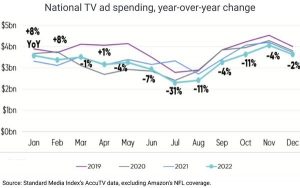All modern marketers want to increase conversion rates –it’s just good marketing. However, the question is always how to do so? By taking a strategic approach in developing a Demand Generation Strategy vs. a tactical approach, marketers can make a bigger impact in their results.
 What really helps to increase conversation rates? Take a look at both the value of a solid Lead Management Architecture and Lead Management Process:
What really helps to increase conversation rates? Take a look at both the value of a solid Lead Management Architecture and Lead Management Process:
Lead Management Architecture- How Qualified is Qualified?
Marketing leads that qualify for sales engagement can be broadly divided into two categories: those who reach a scoring threshold through implicit expressions of interest (namely the consumption of gated marketing content) and those who express interest by completing an explicit request to be contacted (usually through a “Contact Me” or “Request a Demo”) form. In most organizations, these two types of leads are classified the same way, despite the fact that they require different approaches. Programs like Marketo’s Sales Insight or Oracle Eloqua’s Prospect Profiler can help sales people prioritize leads within their queue, but a more overt process of lead distinction can often help the sales organization prioritize and sort leads more effectively.
Using separate classifications for explicit hand raisers and implicit content consumers takes the guess work out of lead prioritization and can make a tremendous impact on conversion rates. Leads that require immediate action become more likely to receive it, sales reps spend less time guessing and more time selling, and the legitimacy of the lead management model is reinforced, which in turn strengthens adherence to the lead management process.
Lead Management Process- Crystal Clear Accountability
An effective lead management process hinges on mutual accountability between marketing and sales. Marketing is charged with bringing quality leads to the table, and sales is responsible for turning those leads into revenue. If sales is not confident in the quality of marketing leads, or if marketing is dismissive of sales’ ability to convert leads, faith in the lead management process can be compromised and with it, any semblance of metrics capable of providing accurate pipeline projections.
To ensure that everyone is held accountable, formal Service Level Agreements (SLAs) should be drafted and signed. This means marketing pledges to quickly and accurately dispense qualified leads to the sales organization, and sales commits to engaging those leads within a set time frame from their dispensation. While these commitments are usually a given, the psychological impact of signing a piece of paper with defined rules can work wonders, and helps shape a dialogue between marketing and sales that is collaborative. If sales people are encountering poorly qualified leads, the SLA encourages them to communicate their misgivings rather than say nothing and dismiss marketing leads as hopeless. In the same vein, a clear time frame of engagement makes it hard for marketing to point the finger at sales for lack of follow-up and when the process is streamlined, conversion rates increase.
Developing a Demand Generation Strategy that takes both the Lead Management Architecture and Lead Management Process into consideration helps increase conversion rates and in turn, helps drive more revenue. It’s all about taking a strategic view of marketing and demand generation… leaving the focus on tactics for execution only. Missed part one of this series on increasing conversion rates? Read it here.
(181)









